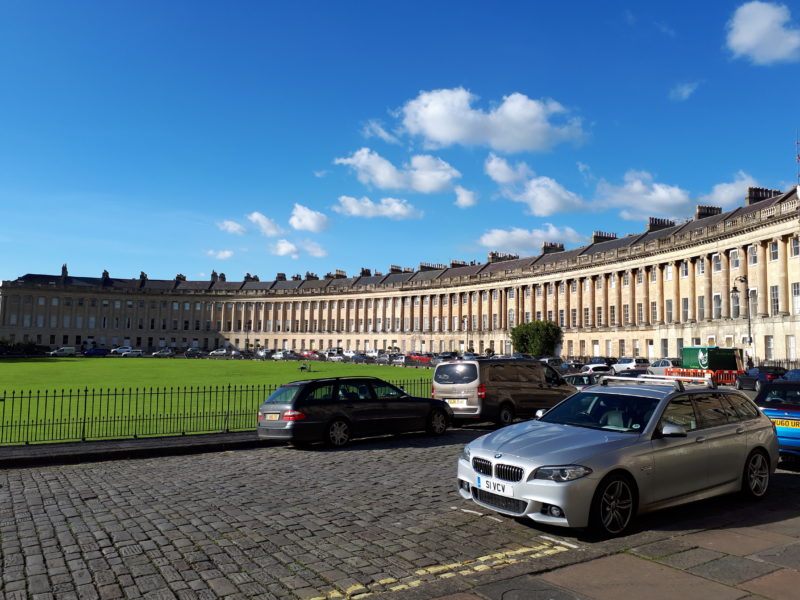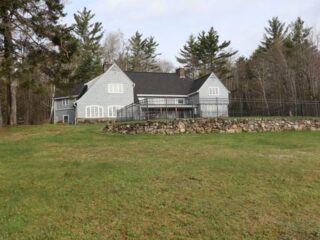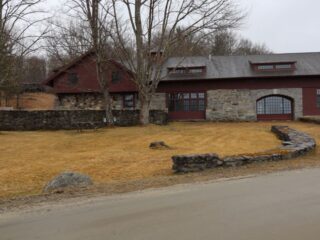by Alice Nord
Jane Austen is often claimed to have disliked Bath, but to some extent, that is a conflation of her heroine Anne Elliot’s feelings about the city with her own. Certainly, Austen mentioned her “happy feelings of escape” at leaving Bath at one point, but her letters—particularly the early ones—also show enthusiasm and admiration. Whatever her feelings, no other city played as large a role in her novels as Bath, with much of Persuasion and Northanger Abbey taking place in what was then a happening spa town. Her protagonists’ feelings about the city shed light on their characters and are, perhaps, exaggerations of Austen’s own feelings at two different stages of her life. Northanger Abbey’s young and naïve Catherine Morland is in awe of the city’s offerings and can barely find enough time in the day for all the visits to the Pump Room, flirting, shopping, and gossiping with her new best friend, Isabella Thorpe; meanwhile, Persuasion’s Anne Elliot, an older character in a later novel, is a quiet introvert who prefers reading and walking in the country over card-playing and shopping and has a stated dislike for Bath.
Bath is no longer the center of hedonism, debauchery, and fashion that it was when Jane Austen wrote about Catherine and Anne. It no doubt draws more Jane Austen fans than it does aristocrats looking to party, and with its cobblestones and Georgian houses, the vibe is more quaint than cosmopolitan. No matter. I went to Bath to see it through Jane’s, Anne’s, and Catherine’s eyes, and while there may be no more balls at the Assembly Rooms, the city is so well preserved that a smidgen of imagination is sufficient to make up for the rest.
It was my mother who introduced me to Jane Austen as a child, when we watched the BBC’s adaptation of “Pride and Prejudice” so many times that the VHS tapes wore out. Two decades later, I proposed a Jane Austen-themed trip as a birthday gift for her, and she picked Bath over Jane Austen’s house in Chawton and even over the Peak District (i.e. the place where Colin Firth once emerged from a pond in a wet shirt). We geeked out preparing for the trip, re-reading the complete works of Austen and noting down every mention of a place or address in Bath.
Our lodging fit the city’s vibe well: The Kennard, a bed-and-breakfast in a former eighteenth-century boarding house a stone’s throw from Laura Place, the posh area where the Dowager Viscountess Dalrymple, Anne Elliot’s rich and snooty relation, stayed in Persuasion. It was drenched in chintz and floral wallpapers and we cooed over the quaintness of the wrought-iron beds and tea sets with home-made shortbread in our rooms before heading to our first stop: the Jane Austen Centre, located in a small Georgian house in central Bath.

The Centre’s Regency Tea Room is kitsch but fun. A surly waitress in a stained, too-short, empire-waisted gown showed us to a table underneath a portrait of Colin Firth as Mr. Darcy, announced that they were out of sandwiches, then stomped off to the kitchen. We settled for “Lady Catherine’s Proper Cream Tea and Scones,” and after a long wait for the tea after the scones had been served, my ex-hippie, proletarian mother quietly bemoaned the difficulties of “finding good help nowadays,” prompting us to giggle like the youngest Bennett sisters under the disapproving glare of Colin Firth. After tea, we were welcomed to the Centre’s small museum by a man in a halfhearted Regency get-up who introduced himself as Colonel Brandon. The exhibits included various items representing genteel Georgian everyday life, such as a recreation of haberdashery shop front, hats and clothes, newspapers, and a writing desk. One room screened a short film about Jane Austen and Bath, narrated by Mr. Wickham from the 1995 “Pride and Prejudice” adaptation, and another room had a wax figure of Jane Austen.
Bath is a small city and many of the spots that Austen and her characters frequented are concentrated within a small area, so you may stumble on one while looking for another. On the east side of River Avon is the aforementioned Lady Dalrymple’s lodging at Laura Place; a former Austen residence at Sydney Place 4, now inconspicuous and somewhat run-down; and adjacent to that, the Sydney Gardens, a shady pleasure garden with groves of wilderness where Austen used to go for morning strolls. Most of the other major locations are on west of the Avon River, all within a five- or ten-minute walk from each other: another of Austen’s former residences at Queen Square, the Assembly Rooms, the Grand Pump Room, Milsom Street, and the Royal Crescent.
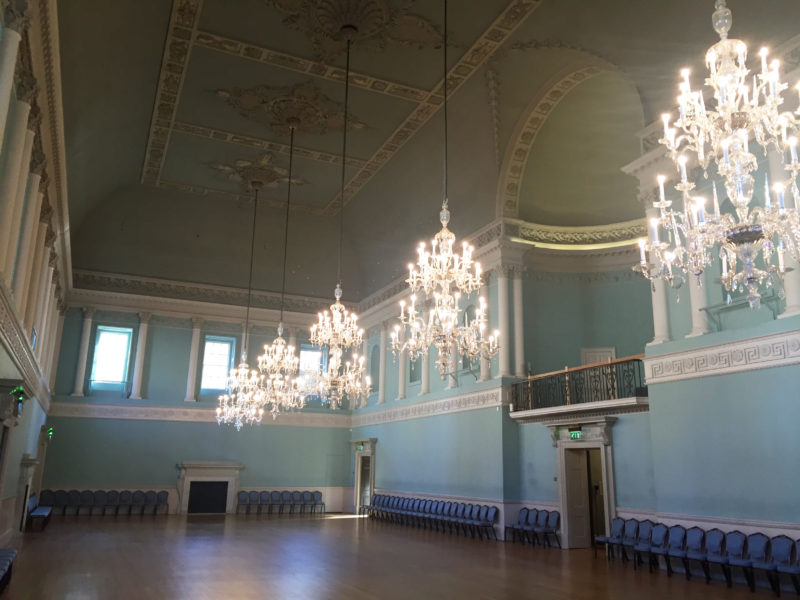
The Assembly Rooms are the backdrop to an important scene in Persuasion, and nowhere in the city could the presence of Austen’s characters be felt so strongly. If you squint, you can see the spacious, chandelier-lit hall so packed with people dancing and talking that poor Catherine Morland can see only the feathers of the ladies’ hair ornaments and has to jostle her way to the highest bench. In the Octagon room, the ghosts of Anne Elliot and Captain Wentworth have their brief meeting before a concert, when Wentworth asserts that a man “does not recover from such a devotion of the heart” as Captain Benwick’s to Fanny (“He ought not—he does not”!). The Tea Room was where Catherine and Mrs. Allen finally managed to find seats, squeezing in at another party’s table, only to discover that there were no remaining tea things for them. It was also where the aforementioned concert in “Persuasion” took place, and the room from which Captain Wentworth stormed out in jealousy despite Anne’s attempts to stop him. For a moment, I was Anne, at first low-key giddy at the expectation of seeing the man she loves at an event, then alternating between joy and despair as the evening wears on.
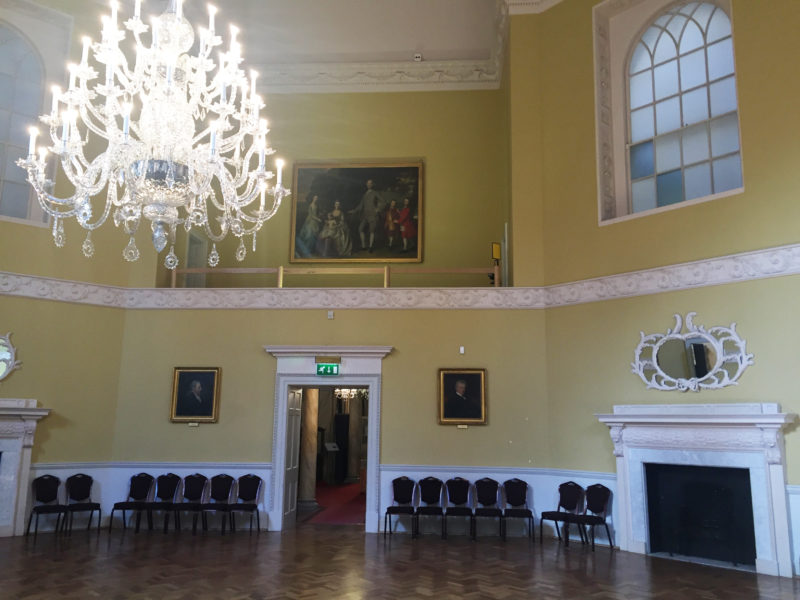
The Grand Pump Room is another major location in “Persuasion” and “Northanger Abbey”; here, Anne took the waters with Lady Russell and Catherine came in the hopes of running into Mr. Tilney and gossiping with Isabella. With its mosaic floors, decorative moldings, pillars, vaults, and French windows, the Pump Room is elegant without being so grand as to be daunting; no wonder it was a popular spot for socializing. While you can still taste the supposedly salubrious spring waters that used to be the main attraction of the Pump Room, it now houses a restaurant and tea room and is a lovely place to take a break from sightseeing. A day of walking and a somewhat emotional visit to the Assembly Rooms had left us in need tea and sugar, so we fortified ourselves with the full afternoon tea set: two pots of tea each accompanied by salmon pâté, finger sandwiches, scones with jam and clotted cream, pistachio tarts, macarons, cream puffs, and Battenberg cake.
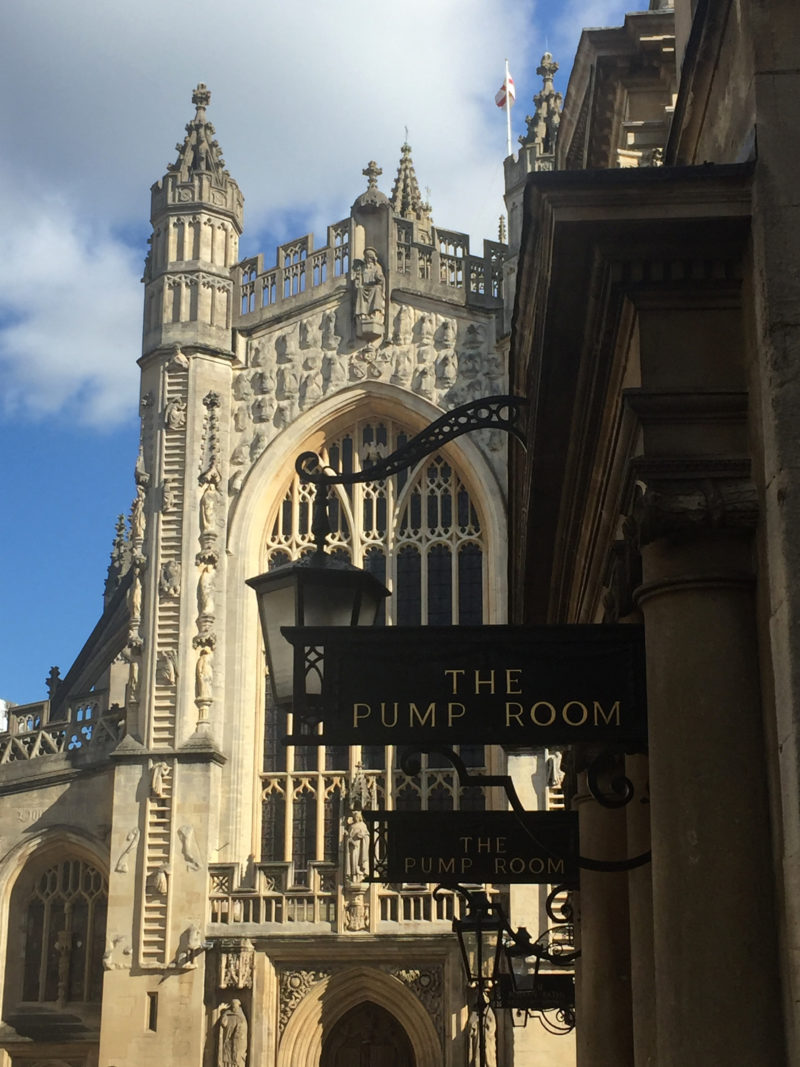
Milsom Street nearby is where Anne and Captain Wentworth had their first, unsatisfactory encounter in Bath, at the confectioner Molland’s, where Anne’s party had gone in to seek shelter from the rain. It is also where Isabella Thorpe went window-shopping and saw a bonnet very much like Catherine’s “only with coquelicot ribbons instead of green.” Molland’s no longer exists, nor is there any millinery, but the many stationery shops, bookstores, and gift shops still allow you to channel Isabella’s love for shopping.
A little further and uphill from the other locations is Camden Crescent, the expensive, fashionable area where Anne, her father Sir Walter Elliot, and her sister Elizabeth had stayed. With its curve of imposing houses and magnificent view, it suits Sir Walter’s taste for elegance and sense of self-importance perfectly; it is easy to imagine him promenading in front of his house on the broad sidewalks or stepping into a fashionable curricle. Not too far away is River Street, where Lady Russell had lodged, and the Royal Crescent, another elegant row of houses that curves around a grand lawn; this is where Catherine and Isabella “arm in arm, again tasted the sweets of friendship in an unreserved conversation.”
After channeling Catherine Morland’s frivolity and awe, Anne Elliot’s hope and despair, and Jane Austen’s amusement and irritation, it was an unexpected bonus of sorts when my mother and I got into an argument over our Eggs Royale at the breakfast table on our last day in Bath, suddenly turning into Mrs. Bennett and one of her daughters. If this happens to you, I recommend doing as we did and going for a long, quiet walk along the canal, starting at Sydney Gardens. As you walk north, the scenery gets increasingly rural with cramped canal-side houses and boats giving way to lush green fields, woolly sheep, and chubby horses as well as a lovely view of houses on the Bath hillside. If the walking path existed in Jane Austen’s time, too, I imagine that she must have gone for many a long walk there whenever she was sick of the petty gossip, lack of privacy, and crowded rooms of Bath.
Alice Nord is a reader, writer, and traveler based in Paris, France.

